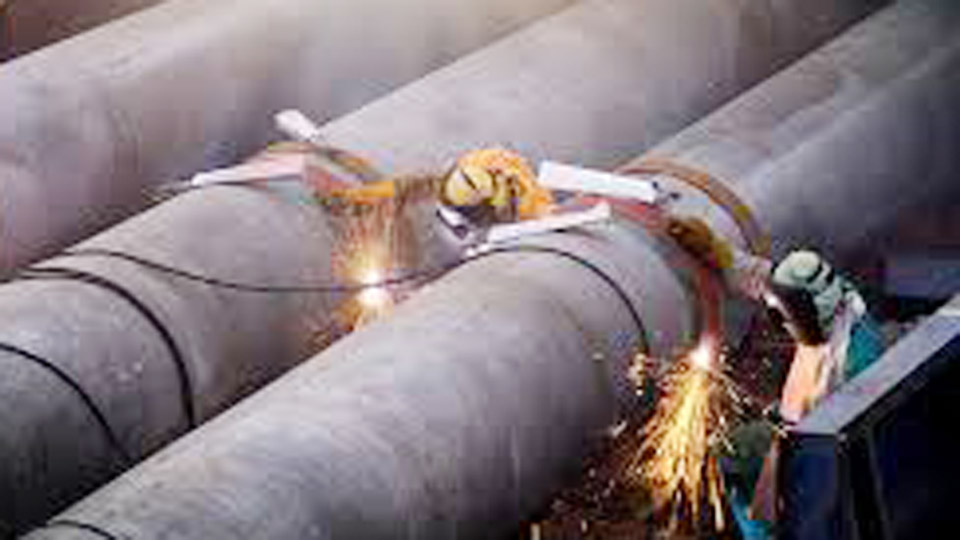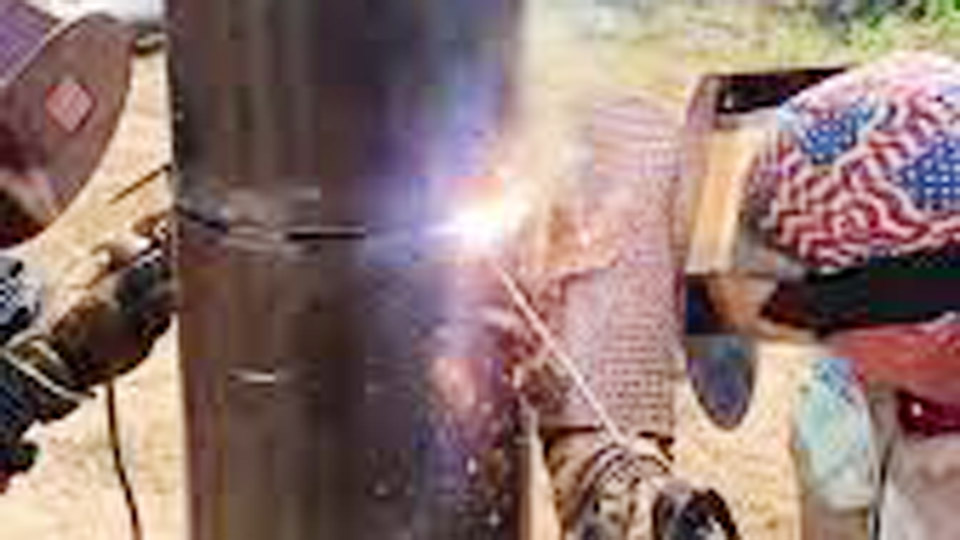If you’ve ever wondered how much an offshore oil rig welder makes, you’re not alone. Welding on an oil rig is one of the most challenging and high-paying welding jobs out there.
The combination of extreme conditions, high-risk work, and specialized skills means that these welders can earn significantly more than their land-based counterparts.

Image by rigjobsonline
I’ve spent years in the welding industry, and I can tell you firsthand that offshore welding is not for the faint of heart. It requires endurance, technical expertise, and the ability to work long hours away from home. But for those willing to take on the challenge, the financial rewards can be substantial.
We’ll break down how much an offshore oil rig welder makes, what factors affect their salary, and how you can maximize your earning potential in this field.
What Does an Offshore Oil Rig Welder Do?
Before we dive into the salary details, let’s talk about what offshore welders actually do. These professionals are responsible for welding, repairing, and maintaining metal structures on offshore oil rigs. This includes working on pipelines, drilling platforms, and other essential infrastructure.
Some of the key responsibilities include:
- Welding and fabricating metal components on oil rigs
- Inspecting and repairing damaged pipelines and structures
- Working with engineers and other specialists to ensure safety and efficiency
- Handling high-pressure welding techniques, often in extreme weather conditions
- Performing underwater welding in some cases, which requires additional training
Because of the harsh working environment, offshore welders must be physically fit and comfortable working in remote locations for weeks or even months at a time.
How Much Does an Offshore Oil Rig Welder Make?
Now, let’s get to the numbers. Offshore oil rig welders can make anywhere from $50,000 to over $200,000 per year, depending on several factors. The hourly rate can range from $25 to over $100 per hour, depending on experience, certifications, and job location.
Here’s a breakdown of salary expectations based on experience level:
| Experience Level | Hourly Wage | Annual Salary Estimate |
|---|---|---|
| Entry-Level | $25 – $40 | $50,000 – $80,000 |
| Mid-Level | $40 – $60 | $80,000 – $120,000 |
| Experienced | $60 – $100+ | $120,000 – $200,000+ |
| Specialized (Underwater, Hyperbaric) | $75 – $150+ | $150,000 – $300,000+ |
Factors That Affect Offshore Welder Salaries
Several factors influence how much an offshore oil rig welder can earn. Let’s take a closer look at what determines their pay.
Experience Level
Like any job, experience plays a huge role in determining salary. Entry-level welders will earn less than those with years of experience in offshore welding. The more complex and high-risk the job, the more an experienced welder can demand in wages.
Certifications and Specializations
Certain certifications can significantly increase an offshore welder’s pay. Employers look for highly trained welders with the following certifications:
- AWS Certified Welding Inspector (CWI)
- Commercial Diving Certification (for underwater welding)
- ASME (American Society of Mechanical Engineers) Certification
- ABS (American Bureau of Shipping) Welding Certification
Underwater welders, in particular, earn some of the highest salaries in the industry due to the dangerous and technical nature of their work.
Location of the Job
The pay rate can also depend on where the oil rig is located. Some of the highest-paying offshore welding jobs are in the Gulf of Mexico, the North Sea, and offshore drilling sites near Australia and the Middle East.
Company and Industry Demand
Not all companies pay the same rates. Large oil companies like Shell, BP, and ExxonMobil often offer higher salaries compared to smaller contractors. When oil prices are high, demand for offshore welders increases, leading to higher wages.
Work Conditions and Risks
Offshore welding is dangerous, and the risks involved can impact salary. Welders working in extreme conditions, such as deep-sea welding, often get hazard pay, which increases their earnings.
Perks and Challenges of Offshore Welding
Perks of the Job
- High Pay: Offshore welders earn significantly more than land-based welders.
- Travel Opportunities: Many welders get to work in different parts of the world.
- Long Breaks: Welders typically work for several weeks and then get extended time off.
- Job Stability: The oil and gas industry continues to require skilled welders.
Challenges of the Job
- Harsh Working Conditions: Long hours, rough weather, and physically demanding work.
- Time Away from Home: Most offshore welders work in rotations, such as 4 weeks on, 2 weeks off.
- Safety Risks: Working with high temperatures, heavy machinery, and deep-sea conditions can be dangerous.
How to Become an Offshore Oil Rig Welder
If you’re interested in becoming an offshore welder, here’s what you need to do:
- Get a High School Diploma or GED – Most employers require at least a basic education.
- Attend a Welding School – Enroll in a welding training program to learn essential skills.
- Gain Certifications – Obtain AWS and other industry-recognized certifications.
- Gain Experience in Land-Based Welding – Before moving offshore, work in construction, shipbuilding, or pipeline welding.
- Apply for Offshore Jobs – Look for openings with major oil companies or offshore welding contractors.
Conclusion
Becoming an offshore oil rig welder is a tough but rewarding career path. The pay is excellent, with skilled welders making anywhere from $50,000 to over $200,000 per year, and specialized underwater welders earning even more.
However, the job isn’t for everyone. It requires long hours, tough working conditions, and time away from home. But for those who are up for the challenge, the financial benefits and job security make it a great choice.
If you’re serious about offshore welding, focus on getting the right certifications, building experience, and looking for opportunities in high-paying locations. With dedication and hard work, you can build a career that offers adventure, high pay, and long-term stability.
Frequently Asked Questions (FAQs)
How much does an entry-level offshore welder make?
Entry-level offshore welders typically make between $50,000 and $80,000 per year, depending on location and company.
What is the highest-paying welding job?
Underwater welding, especially deep-sea and hyperbaric welding, is one of the highest-paying welding jobs, with salaries exceeding $300,000 per year.
Do offshore welders get paid overtime?
Yes, many offshore welders receive overtime pay, hazard pay, and bonuses for working long shifts or under extreme conditions.
How long do offshore welders stay on the job?
Most offshore welders work in rotations, such as 4-6 weeks on the rig, followed by 2-4 weeks off.
Is offshore welding dangerous?
Yes, offshore welding involves risks such as high-pressure environments, rough seas, and exposure to hazardous materials. However, strict safety measures help reduce these risks.


